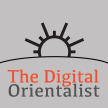
Good examples of and projects about the opportunities created by digital humanities in Ottoman Studies are increasing day by day. In particular, the concentration of research funds in this area enables the Ottoman archives to be analyzed with new technological infrastructures in a wider perspective in terms of scope, theme, and method and to be better integrated into research. We observe that the influence of digital humanities in Ottoman studies intensifies, more specifically, with projects in the discipline of history and literature. In these projects, a working environment is organized with an interdisciplinary team under the leadership of the executive(s). However, apart from the projects, there is another issue that will qualitatively affect the progress of digital humanities in Ottoman studies. What do we do pedagogically at universities in Digital Humanities courses that focus on Ottoman and Turkish studies?
Particularly, the interest of undergraduate and graduate humanities students in digital methodologies is more than a rising trend, increasing the importance of this question more and more every day. Students who become more involved with emerging technologies in their daily lives need a roadmap to exploit them as they observe the differences in research and education as part of digital methodologies. Although it is no longer the only center of knowledge production in the digital age, it is not always easy for university institutions, which still have an important authority, to follow the developments in this subject and update their educational curricula. However, the steps to be taken in this area will accelerate Ottoman and Turkish studies, and Middle Eastern studies more generally, and will pave the way for integration with international studies conducted in digital humanities.
We are still in the early stages, determining which digital methods can be used for Ottoman sources and what potentials exist for which topics. For example, the lack of a standard for coding Ottoman Turkish concepts and resources for a TEI study is an marked shortcoming. On the other hand, the lack of an empire-level macro geodatabase that brings together regional or periodical gazetteer studies is another issue that needs to be emphasized. Academics and students, as well as institutions, can contribute greatly to starting these studies or creating an environment for discussion on how to establish standards in these fields. Each experience, challenge, or contribution is important for future digital Ottoman studies to progress on a more solid basis. The more experience we gain, the more we encounter problems, and the more we come together to find solutions, the more valuable contributions we can make to the field. In order to increase these experiences, the integration of Ottoman and, in a broader perspective, Middle East studies with digital humanities should be ensured in undergraduate and graduate classes, and how to follow a course in classroom education in this field should be on the agenda. How many digital methodologies developed especially for English studies will be adapted for Ottoman Turkish is important not only for Ottoman studies but also for the multi-language vision of Digital Humanities. Every study in this process will strengthen the status of the digital humanities field in non-English studies and will enrich the knowledge production by spreading the dominant fields to the academic studies of different geographical regions.
It is very important that Turkish academia and university institutions, which can be considered the center of Ottoman studies, focus on the reflections of digital transformation, which permeates every aspect of our lives, in education and research curricula. Responding to the demands of students in the humanities, especially history, to adopt the new methods they follow in the literature to their own work should be among the priorities. At the time of writing this piece, we observe that only a few universities in Turkey offer education in the field of digital humanities and digital history. The author of the is article, for instance, tries to contribute to this field by designing the first applied Digital Humanities undergraduate course at Üsküdar University, as an in-class software training on GIS, text, and network analysis as part of Ottoman studies. However, students’ interest go far beyond this. The interest in Digital Humanities education, which is currently being supported by the initiatives of institutions or platforms, is growing day by day. For example, the Digital Ottoman Studies Platform held the first training in this field in Turkey and is organizing the second one in May 2022, due to popular demand. We hope that such training will continue increasing, both for institutions and individuals. Thus, an environment is provided for both the inclusion of Ottoman studies in innovative methods and perspectives with experience and the strengthening of digital humanities as a multi-language.
